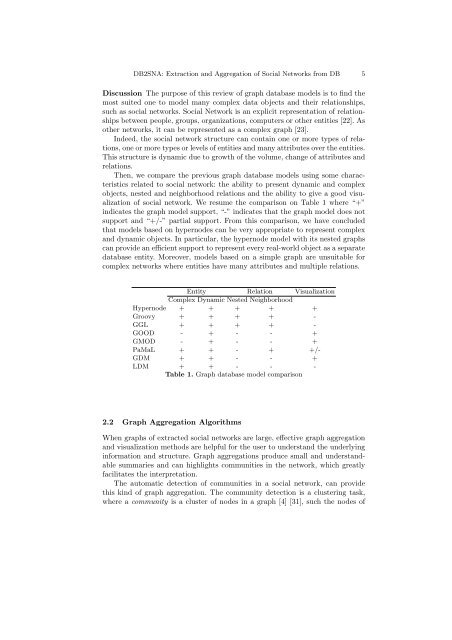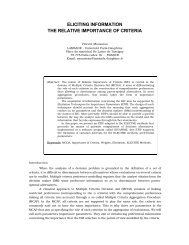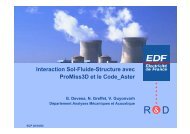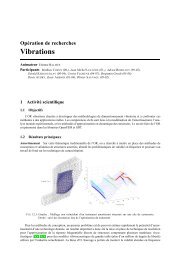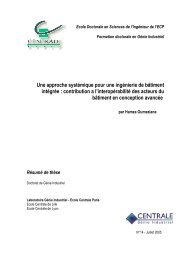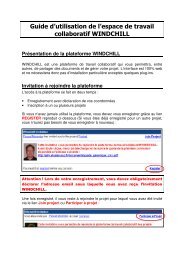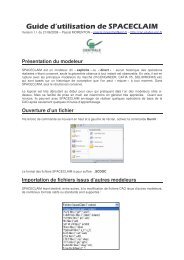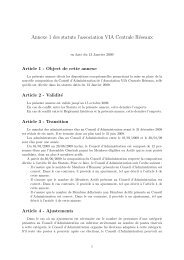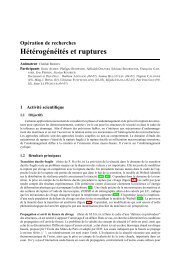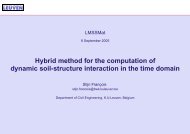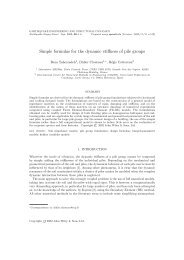4 Authors Suppressed Due to Excessive Lengthas variations of the basic mathematical definition of a graph. The structure, usedfor modeling entities and relations, influences the way that data is queried andvisualized. In this section, we compare existing models in order to find the onemost suitable one for storing and representing a social network. We will focuson the representation of entities and relations in these models. In the following,we present some models classified according to the data structure used to modelentities and relations.Models based on simple node Data are represented in these models by a(directedorundirected)graphwithsimplenodesandedges.Mostofthesemodels(GOOD [14]), GMOD [15], etc.) represent both schema and instance databaseas a labeled directed graph. Moreover, LDM [16] represents the graph schema asa directed graph where leaves represent data and whose internal nodes representconnections between the data. LDM instances consist of two-column tables, onefor each node of the schema. Entities in these model are represented by nodeslabeled with type name and also with type value or object identifier (in thecase of instance graph). Some models have nodes for explicit representation oftuples and sets (PaMaL[17], GDM [18]), and n-ary relations (GDM). Relations(attributes, relations between entities) are generally represented in these modelsby means of labeled edges. LDM and PaMaL use tuple nodes to describe aset of attributes which are used to define an entity. GOOD defines edges todistinguish between mono-valued (functional edge) and multi-valued attributes(nonfunctional edge). Nevertheless, these models do not allow the presentationof nested relations and are not very well suited for complex objects modeling.Models based on complex node. In these models, the basic structure of agraph (node and edge) and the presentation of entities and relations are based onhypernodes (and hypergraphs). Indeed, a hypernode is a directed graph in whichnodes themselves can be graphs (or hypernodes). Hypernodes can be used torepresent simple (flat) and complex objects (hierarchical, composite, and cyclic)as well as mappings and records. A hypergraph is a generalized notion of graphwhere the notion of edge is extended to hyperedge, which relates to an arbitraryset of nodes. The Hypernode Model [19] and GGL[20] emphasize the use ofhypernodesforrepresentingnestedcomplex objects.GROOVY[21]isfocusedonthe use of hypergraphs. The hypernode model is characterized by using nestedgraphs at the schema and instance levels. GGL introduces, in addition to itssupport for hypernodes (called Master-nodes), the notion of Master-edge forthe encapsulation of paths. It uses hypernodes as an abstraction mechanismconsisting in packaging other graphs as an encapsulated vertex, whereas, theHypernode model additionally uses hypernodes to represent other abstractionslike complex objects and relations. Most models have explicit labels on edges. Inthe hypernode model and GROOVY, labeling can be obtained by encapsulatingedges, that represent the same relation, within one hypernode (or hyperedge)labeled with the relation name.
DB2SNA: Extraction and Aggregation of Social Networks from DB 5Discussion The purpose of this review of graph database models is to find themost suited one to model many complex data objects and their relationships,such as social networks. Social Network is an explicit representation of relationshipsbetween people, groups, organizations, computers or other entities [22]. Asother networks, it can be represented as a complex graph [23].Indeed, the social network structure can contain one or more types of relations,oneormoretypesorlevelsofentitiesandmanyattributesovertheentities.This structure is dynamic due to growth of the volume, change of attributes andrelations.Then, we compare the previous graph database models using some characteristicsrelated to social network: the ability to present dynamic and complexobjects, nested and neighborhood relations and the ability to give a good visualizationof social network. We resume the comparison on Table 1 where “+”indicates the graph model support, “-” indicates that the graph model does notsupport and “+/-” partial support. From this comparison, we have concludedthat models based on hypernodes can be very appropriate to represent complexand dynamic objects. In particular, the hypernode model with its nested graphscanprovideanefficientsupporttorepresenteveryreal-worldobjectasaseparatedatabase entity. Moreover, models based on a simple graph are unsuitable forcomplex networks where entities have many attributes and multiple relations.Entity Relation VisualizationComplex Dynamic Nested NeighborhoodHypernode + + + + +Groovy + + + + -GGL + + + + -GOOD - + - - +GMOD - + - - +PaMaL + + - + +/-GDM + + - - +LDM + + - - -Table 1. Graph database model comparison2.2 Graph Aggregation AlgorithmsWhen graphs of extracted social networks are large, effective graph aggregationand visualization methods are helpful for the user to understand the underlyinginformation and structure. Graph aggregations produce small and understandablesummaries and can highlights communities in the network, which greatlyfacilitates the interpretation.The automatic detection of communities in a social network, can providethis kind of graph aggregation. The community detection is a clustering task,where a community is a cluster of nodes in a graph [4] [31], such the nodes of


